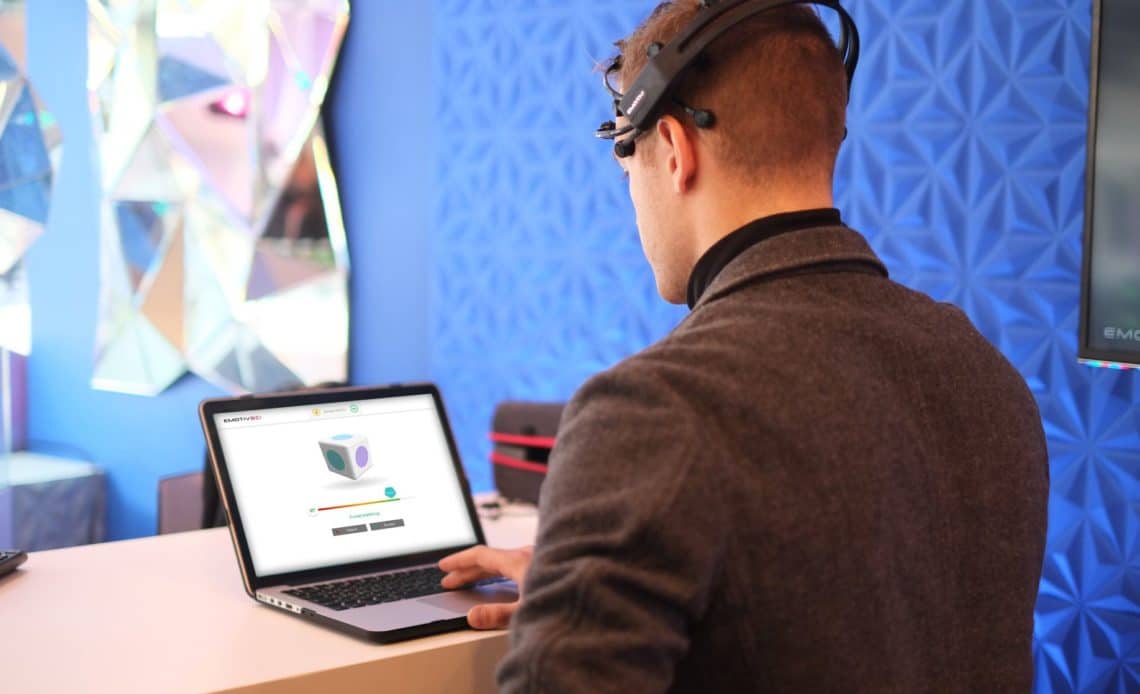
Electroencephalography, or EEG, is a method of measuring electrical activity in the surface layer of the brain using electrodes placed on the scalp. EEG machines can measure brain waves which makes them useful for all sorts of medical applications.
EEG headsets are miniature EEG devices that are sold for at-home use, generally in the price range of a few hundred dollars. They’re less powerful than medical EEGs but still good enough for things like optimizing focus or training yourself to relax and sleep.
In this article, we’ll look over the science of electroencephalography, EEG headsets in particular, including potential side effects of EEG usage. Then, we’ll explain how to use an EEG device, how to select the best EEG device for your needs, and answer a few of the most commonly asked questions about EEG headsets.
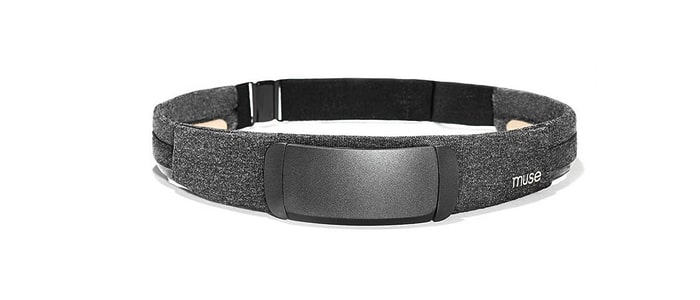
Looking for the best EEG headset?
With a battery life of 10 hours and Bluetooth-enabled connectivity, the Muse S is one of the most convenient EEG devices on the market, and with the most features: assistance in sleeping, meditation, and heart rate monitoring among others.
EEG Studies
Studies on EEG headsets are usually focused on their ability to measure things like anxiety or sleep, rather than to improve them. There are a few exceptions, but in many cases, we have to settle for studies showing that EEG can measure what we want to improve, and then infer therapeutic utility from that.
Most studies use the Muse EEG headset. Muse is the most popular consumer EEG headset, is easy to use, and is also the most affordable EEG headset that’s designed for therapeutic use, rather than for entertainment purposes. It’s arguably a better choice for research compared to more expensive brands since actual consumers are more likely to use a low-end headset, hence better replicating real-life conditions.
High-end headsets, like Emotiv, are often marketed for research purposes, however, their high cost makes them impractical for studies whose design would require the use of several headsets.
EEG Headsets For Sleep
Even low-quality EEG headbands seem to be helpful in improving sleep. In a recent study conducted in September 2021, participants performed 40 nightly sessions with the two-sensor URGOnight headband. Average sleep duration improved by half an hour per night, and significant improvements were seen in insomnia, sleep quality, and sleep satisfaction.
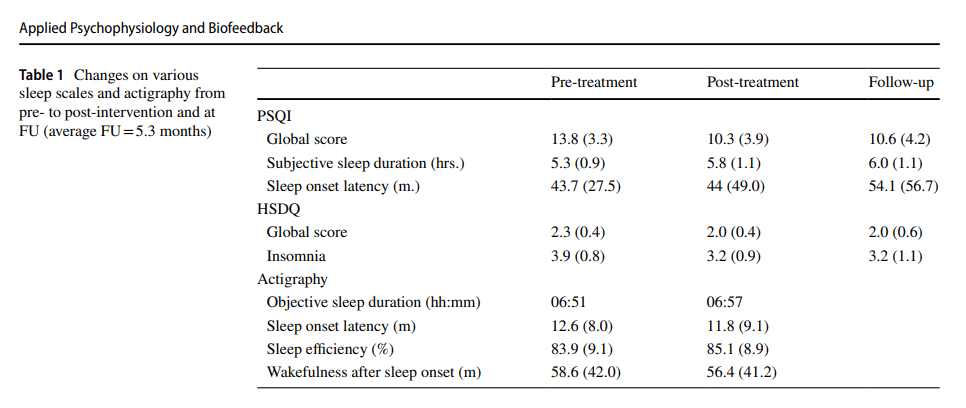
Another study found that even the single-channel NeuroSky MindWave EEG headset– which costs less than a hundred dollars and isn’t considered good enough for medical or self-improvement uses– is able to reliably detect which stage of sleep subjects are in.
EEG Headsets For Stress Reduction
One 2019 study found that the Muse four-channel EEG headband had either decent or high accuracy in measuring stress, depending on how finely they tried to measure stress. For two-category stress (either stressed or non-stressed) accuracy was 93%, but for three-category stress (no stress, low stress, or high stress) accuracy fell to 64%.
For reference, Muse is one of the less-capable EEG headbands on the market, with only four sensors laid out in a single line. More advanced headsets have additional sensors arranged three-dimensionally.
While enjoyment isn’t exactly the opposite of stress, another study did find that the Muse headband strongly and accurately measured enjoyment while playing video games.
EEG Headsets For Meditation
Meditation is a way of reducing stress and enhancing focus and mindfulness, and EEG-guided neurofeedback exercises are essentially meditation with a neurofeedback mechanism added so you can see how well you’re doing. As such, studies supporting the effectiveness of EEG for stress reduction also support the effectiveness of EEG for meditation.
So, what about focus?
One study found that the Muse headband is 80-82% accurate in measuring focus and relaxation.
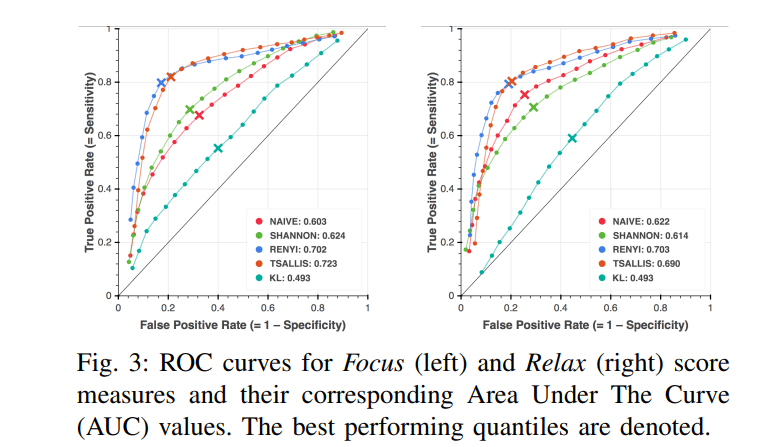
Mindfulness?
EEG headsets (Muse again, actually) are quite accurate in measuring mindfulness and attentiveness. Another study found that while EEG feedback helped prevent attention from wandering, it didn’t speed up recovery after attention wandered.
Again, this doesn’t mean EEG headsets, in and of themselves, make you relax, focus or be mindful. They just measure whether you’re doing well, and that feedback can help you learn to focus, relax or be mindful more quickly and effectively.
EEG Headsets For Productivity
The best mental state for productivity is one of relaxed focus. As such, all of the above studies provide support for EEG headsets having productivity benefits, particularly the one showing that EEG headsets have over 80% accuracy in measuring focus and relaxation.
Theoretically, if EEG headsets are good for meditation– particularly focus and mindfulness– they should be good for productivity. However, studies have not yet directly tested using EEG headsets for productivity.
EEG Headset Accuracy
Although they’re getting better, portable EEG headsets still suffer from considerable measurement errors.
That said, remember the earlier study which found that even the lowest-quality EEG headset on the market can be pretty accurate in detecting sleep stages. The apparent lesson here would be that EEG headsets are highly prone to moment-to-moment errors, but that those errors can be averaged out to produce good overall accuracy, though at the expense of moment-by-moment accuracy.
As such, EEG headsets are worth using, but only for applications that don’t require moment-by-moment accuracy. For instance, they’re probably not very good for improving sports performance– which requires sudden changes in mental state– but are good for teaching you to meditate.
EEG Side Effects
For the most part, EEG headsets don’t have side effects because EEG doesn’t do anything to your brain– it merely reads and measures brain activity and it does so passively. Unlike an MRI, EEG machines don’t emit any kind of signal into your brain to help them read it.
Medical EEG sessions have occasionally been known to trigger epileptic seizures in people with epilepsy. This doesn’t seem to be an associated risk with using at-home EEG headsets, or at least no more than using any other app on your phone, but it’s worth being aware of if you have epilepsy.
Although EEG doesn’t have side effects, per se, the electrodes can cause reactions or discomfort for reasons unrelated to the EEG itself. Electrodes come in two varieties– wet and dry.
Wet electrodes require you to rub a conductive paste on your skin. This can cause skin irritation for some people, or it might just be hard to get out of your hair. If you have a wet EEG and you’re not bald, you might want to only use it before you shower.
Most at-home EEG headsets are dry, however, meaning there’s no paste. With some of these, the electrodes can be a bit too pointy for comfort. They won’t poke into your skin and draw blood, but there may be an uncomfortable, almost pinching-like sensation from them sticking into your skin.
That’s about the extent of the side effects, though. Since EEG doesn’t directly affect the brain, it isn’t really prone to causing side effects.
How To Use An EEG Headset
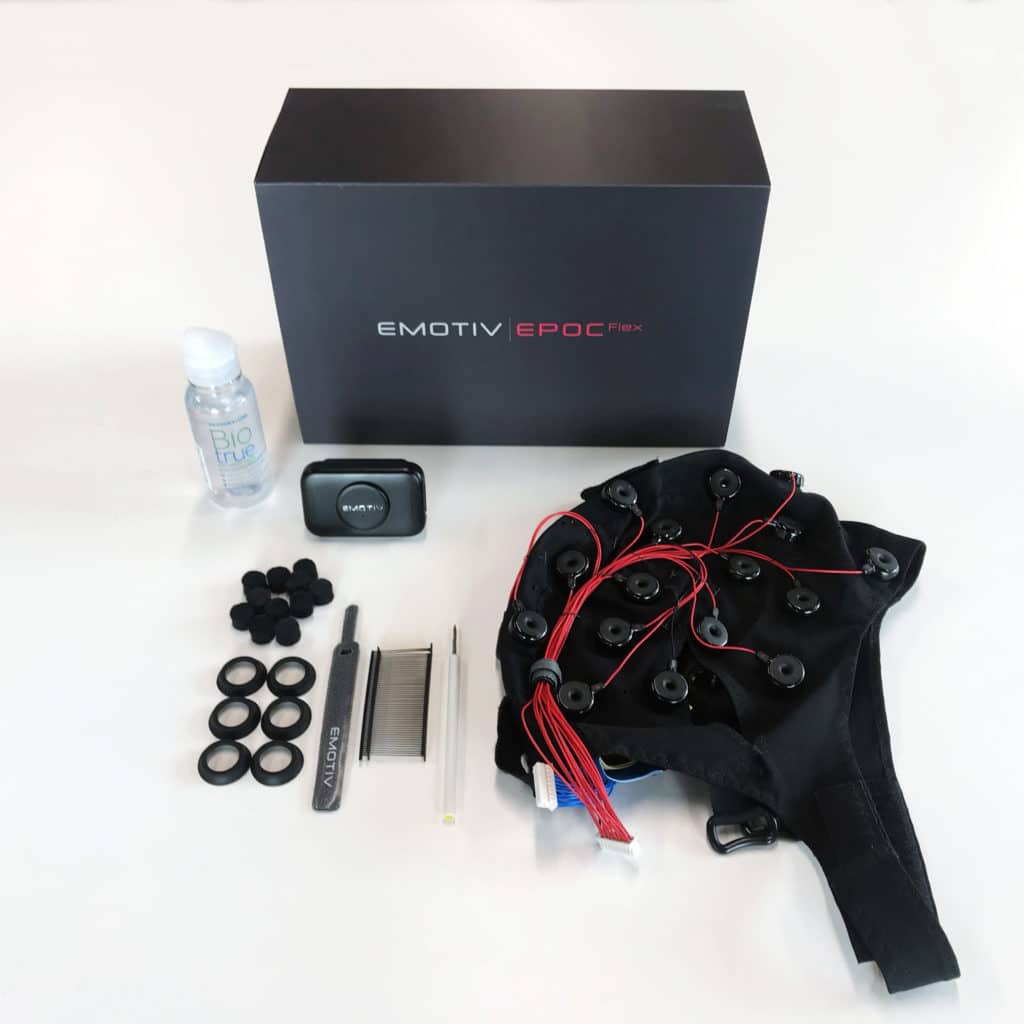
Every EEG headset will come with instructions. The details of how to put an EEG on, turn it on, or use the associated apps will be specific to each headset.
Here, I’ll focus on the generalities of how to use an at-home EEG device, such as how often to use it, when to use it, and how long you should use it.
How Often Should You Use An EEG Headset?
In general, you should use an EEG headset daily. There are a few different purposes for EEG headsets, like helping you relax, focus or sleep, but in general, they fall under “the kinds of little habits you have to practice daily.”
Much like meditation, EEG headset usage is best done a little bit every day, rather than for longer sessions on occasion.
How Long Should You Use An EEG Headset For?
In general, studies that found benefits from the use of EEG headsets implemented 20-minute EEG sessions. In practice, there’s a bit of variability, but people usually stay within a 10-30 minute range.
Ten minutes should be considered a bare minimum, but every headset will come with apps that put you through a set program of some sort, so you’ll have guidance in this area.
When Should You Use An EEG Headset?
In general, you should use an EEG headset whenever you have time. That said, there is such a thing as circadian entrainment– training your brain to enter certain mental states at certain times of the day.
With that in mind, it might make sense to use EEGs during work hours if you’re trying to improve productivity. Or, if your goal is to learn to relax, perhaps use them during the time of day when you feel most stressed. Finally, if your goal is to sleep better, then the evening is the best time for EEG training.
What To Look For When Buying An EEG Headset
Not all EEG headsets are created equal. Some are far more expensive and/or capable than others, whereas others may be more comfortable or easy to use.
The main measure of capability is the number of channels, i.e. sensors. An EEG headset with 2 sensors will be less capable than one with 4 sensors, which will be less capable than one with 12 sensors, and so on.
Aside from sheer number, you should also consider how the sensors are arranged. Most headsets have their sensors arranged in a line, curving around the head to provide a two-dimensional image of the brain. More advanced headsets (and this requires at least 4-5 sensors) will instead arrange the sensors in a way that englobes the head to capture a three-dimensional image.
Price-wise, EEG headsets range from just under a hundred dollars to over ten thousand. I know that sounds like a huge range, but these prices fall into clear “bands.”
EEG headsets priced under $150 are generally meant for entertainment uses only. Generally, they’re used to play a variety of games (usually smartphone) that are made specifically to be used with them.
Headsets in the $200-$1,000 range are usually meant for individual therapeutic use. The lower half of that range, around $200-500, is aimed at more casual users. Headsets in this range are affordable and easy to use and generally put you on a few set brain-training programs.
The upper portion of this range, around $500-1000, consists of high-performance headsets meant for individuals who are motivated to put in more work. These headsets have better sensors and allow for more customized training programs, but they’re sometimes less comfortable, which is one of the main trade-offs for having better sensors.
Headsets over a thousand dollars are mostly aimed at scientific and medical users, although a handful of hardcore EEG enthusiasts use them too. These feature more and more powerful sensors and incredible customizability. However the customizability is not optional– you have to take a DIY approach, and you need to know a lot about how to use an EEG machine.
These headsets feature movable sensors, meaning you can place them in different spots for different purposes, but you have to know how to place them. Their apps also tend to present you with raw data and greater ability to set your own measurement and training parameters. These EEG devices are still simpler than medical EEGs, but not by much.
Another thing to consider is whether an EEG is wet or dry. Most are dry, especially at the lower end, but higher-priced EEGs often use wet electrodes. These require you to regularly purchase conductive gel and using that gel can be messy and inconvenient.
Comfort is another factor and again tends to be worse in more powerful EEG headsets.
The reputation of the manufacturer should also be considered. There are little-known companies that sell knock-off EEG headsets so make sure to look for manufacturers who have published technical data and had their products reviewed on a variety of tech websites.
In that same vein, an EEG headset is an expensive enough purchase that you should expect a manufacturer’s warranty. Consider how good of a warranty it has before making your purchase decision.
How To Find The Right EEG On Amazon
Some of the best EEG headsets aren’t sold on Amazon, but a few are. Here’s what to look for on Amazon.
First off, look at user experiences and reviews. You should also consider looking at ratings, but take them with a grain of salt.
The average star rating can only tell you so much and fake reviews are rampant on Amazon. Fakespot is okay at spotting them, but ultimately you should read the top reviews to see if they sound real. Bear in mind that a company could also just be doing a good job of only selling to people who will enjoy their product.
The other reason to read the top reviews is to find out more specifically what’s good or bad about a product. Is it accurate but hard to use? Durable but uncomfortable? How’s the battery life?
Reviews don’t just tell you whether a product is good; they help you decide if it’s what you’re looking for.
Make sure you know who’s selling a product. In general, you want to buy directly from the manufacturer, not least because that gets you better customer service and warranty protection. It’s easy to confuse the product brand and the seller on Amazon, but you always want to be clear who you’re buying from.
Most importantly, do not buy anything from Amazon that seems to have no existence outside of Amazon. We love Amazon, but there are definitely some scams on there.
What Are The Most Trustworthy EEG Headset Brands?
Muse
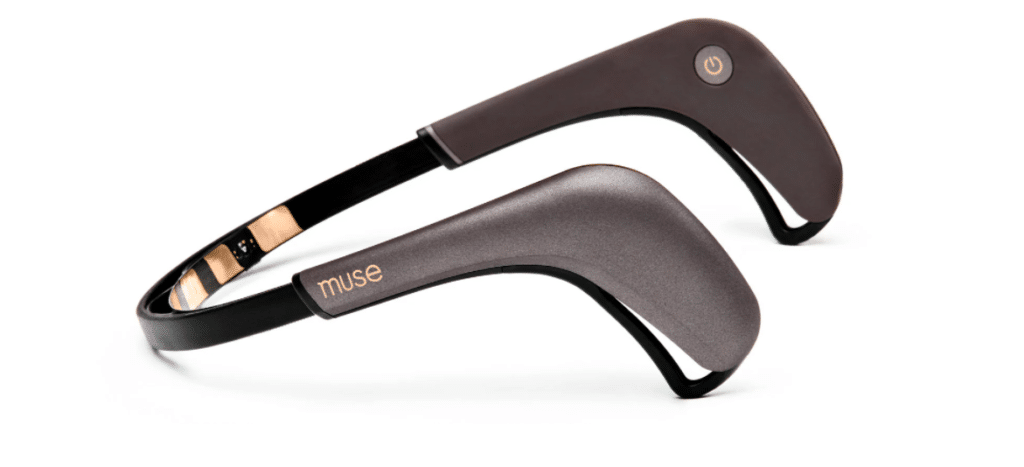
Muse is, far and away, the most popular and best-known home EEG headset. There are a few reasons for that: good marketing, an attractive form factor, high usability. But most of all, Muse strikes a good balance between cost and capability.
The earlier version of Muse had four EEG sensors, but the Muse 2 has seven dry EEG sensors arranged in a horizontal band around the head. In addition to EEG, Muse is able to measure heart rate variability, blood oxygenation, and movement. All of this is an incredible value at the $249 price point– and as of this article, it’s currently on sale for $199.
Muse also offers the Muse S, a better headband with enhanced capabilities for tracking sleep. It has the same sensors; the enhanced capabilities mainly mean more functionality in the companion mobile app, and longer battery life to allow it to stay active through a whole night’s sleep.
URGOnight
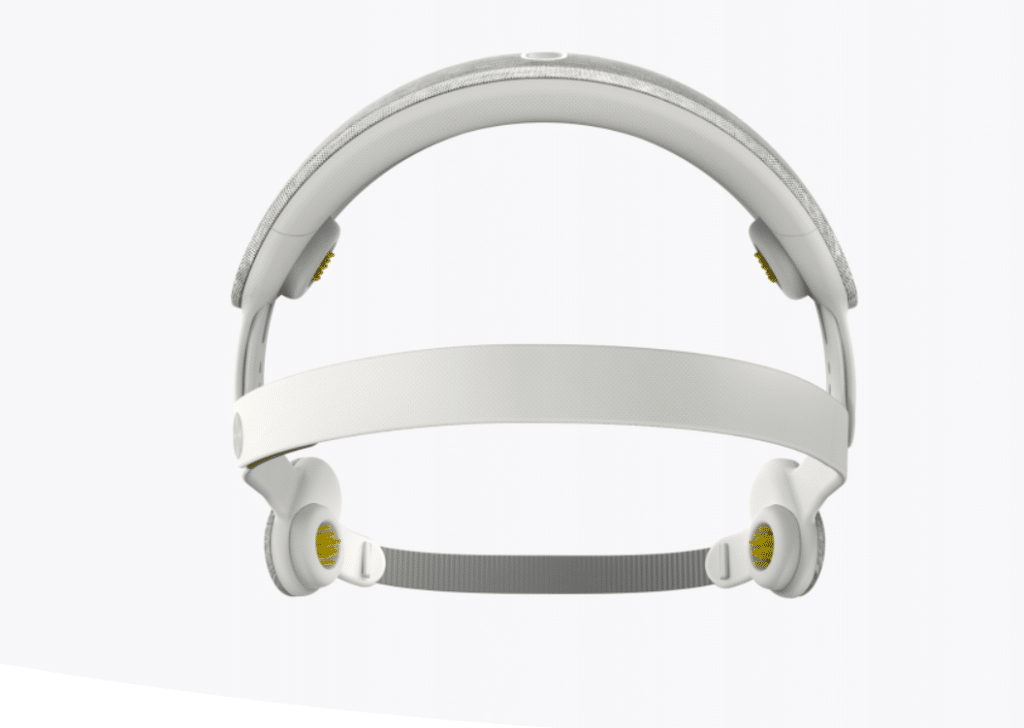
As the name suggests, URGOnight is all about optimizing sleep. It’s not actually meant to be worn during sleep but rather used for daytime brain training sessions which help you sleep later that night.
With four high-fidelity sensors arranged to englobe the head, URGOnight has some of the better technical specs on the market. At a $499 price tag, it’s a bit steep for such a specialized use– but since improving your sleep makes everything else better, from your health and libido to productivity, willpower, mental performance and even happiness, a substantial improvement in sleep is worth it.
URGOnight can increase nightly sleep by up to 2 hours, although published research shows the average is .7 hours or 42 minutes.
Emotiv
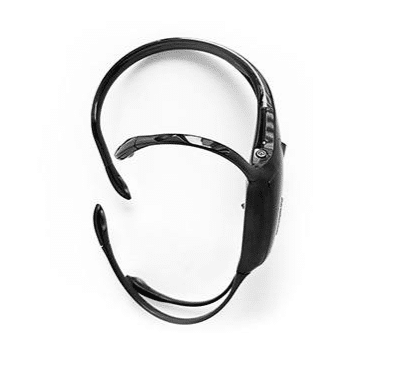
Emotiv is the main high-end player in the EEG headset market. Their flagship product, the Epoc Flex Kit, has a whopping 32 saline-coated sensors that can be reconfigured at will. It is very nearly a portable medical-grade EEG, with all the capabilities and usability issues that entails.
The Epoc X has a more manageable 14 saline-soaked felt sensors in a fixed globe configuration and is the most powerful and capable consumer-oriented EEG on the market. Finally, their Epoc Insight has 5 dry sensors in a fixed three-dimensional configuration and is their answer to Muse– a little harder to use and more expensive, but with a better sensor configuration.
Versus
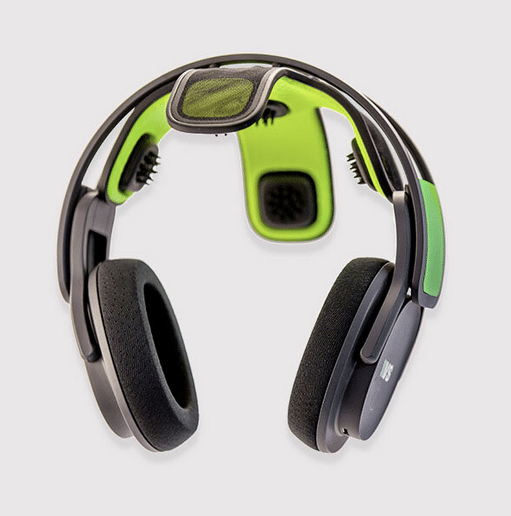
The Versus EEG by Senselabs was the first EEG headset to offer a full three-dimensional sensor setup with dry sensors in an easy-to-use format. Initially aimed at high-end consumers, they’ve since re-oriented to focus on selling to doctor’s offices, sports teams, special forces units, and other institutional buyers.
Versus is aimed not at the casual user, but at a mix of medical and peak performance use cases. With its five powerful sensors, three-dimensional setup, and advanced neurofeedback app, it’s well-designed to do so.
MyndPlay
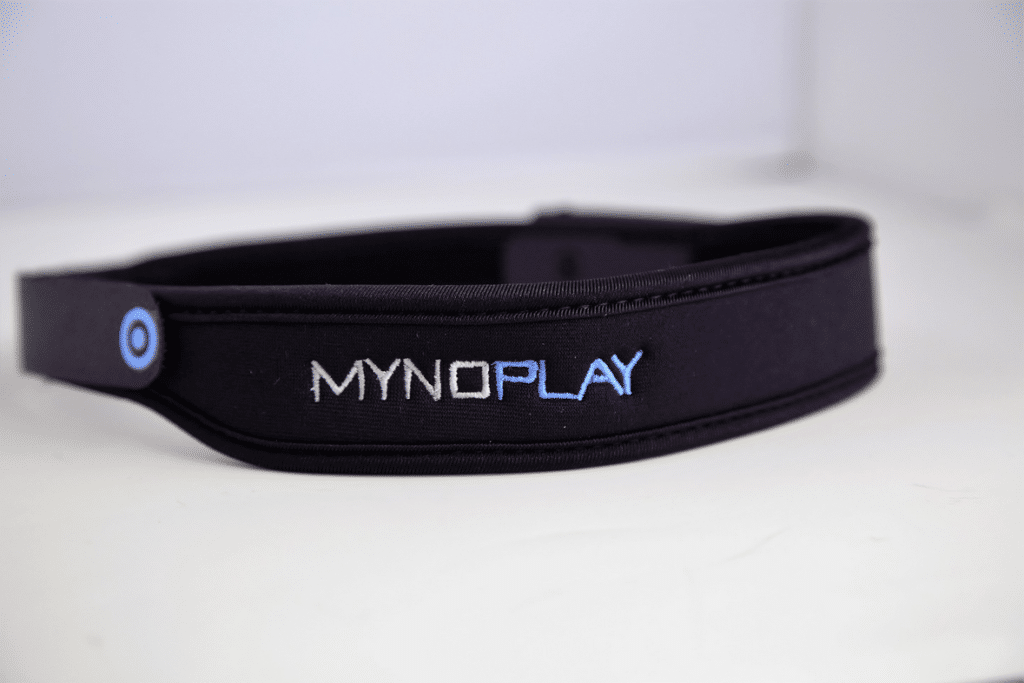
MyndPlay is unique in focusing largely on the gaming applications of EEG headsets. While it does offer some health applications, it’s clearly positioning the MyndPlay EEG headset to be used as a controller for video games. Right now they offer a few mobile games but have yet to integrate their device with more complex PC or console games.
MyndPlay also offers a baseball hat that the headset can fit into, allowing health users to discreetly wear it in public.
Read Our EEG Headset Reviews To Learn More About The Best EEG Headsets
EEG Headset FAQs
What is an EEG headset?
An EEG headset is a portable electroencephalography machine that can read your brainwaves. They’re designed to require no training, unlike medical EEG devices, and they use an app to translate raw data into easily understood metrics, such as focus and relaxation.
How do EEG headsets work?
EEG headsets use sensors to read your brainwaves. These sensors are placed against the head and tend to work better if you have short hair. Most are dry, unlike the gel-coated sensors used in medical settings.
EEG headsets only passively read brainwaves; they don’t do anything to your brain, unlike an MRI.
What are EEG headsets used for?
Consumer-grade EEG headsets are usually used to help users relax, focus, meditate or sleep. Many people find they improve productivity or sports performance.
Some headsets are also used for entertainment, medical or research purposes.
What can you measure with an EEG headset?
The headset directly measures brainwaves, which range from low-energy theta and delta waves to medium-energy alpha, and high-energy beta and gamma waves. Different mixes of brain waves are associated with different mental states– low energy with sleep, middle energy levels with relaxed alertness, and high energy with excitement.
EEG headsets also have apps that translate these brain waves into measures, such as relaxation or focus, so you don’t have to interpret the raw data. EEG can measure changes in mental state on the order of milliseconds, so you can quickly get feedback on your mental state and train yourself to relax or focus on demand.
How much does a portable EEG machine cost?
Usually anywhere from $200 to $2,000. Headsets intended for casual consumers fall toward the low end of the range, at $200 to $500.
A few cheaper headsets do exist in the hundred-dollar range but are intended only for playing simple mobile games. Likewise, more expensive headsets are intended only for research purposes and aren’t sold publicly.
What is the best EEG headset?
This really depends on what you want one for, but we’ve recommended a few.
- For pure entertainment, we recommend MyndPlay.
- For helping casual users relax, we recommend Muse or the Emotiv Epoc Insight.
- For sleep, URGOnight is the best option, followed by the Muse S.
- For medical uses or promoting peak performance in athletes, businesspeople or soldiers, Versus, the Emotiv Epoc Flex Kit or Epoc X are all good options, with the Epoc Flex Kit requiring a degree of prior training in using EEG machines.
Are EEG headsets safe?
Entirely. Since they passively read the brain without affecting it in any way, there is no danger associated with their use.
Do EEG headbands work?
They definitely work for helping people to sleep and relax better. Research on focus, productivity, and sports performance is still being done, but anecdotally users say they work for these purposes as well.
Studies You Can Read About EEG Headsets And EEG Devices
- Evaluation of the URGOnight Tele-neurofeedback Device: An Open-label Feasibility Study with Follow-up (PsyArXiv, 2021)
- Single Channel EEG for Near Real-Time Sleep Stage Detection (2019 International Conference on Computational Science and Computational Intelligence (CSCI). IEEE, 2019)
- Classification of Perceived Mental Stress Using A Commercially Available EEG Headband (IEEE journal of biomedical and health informatics 23.6, 2019)
- Brain-EE: Brain Enjoyment Evaluation using Commercial EEG Headband (Proceedings of the 9th acm international conference on pervasive technologies related to assistive environments, 2016)
- Real-time Mental State Recognition using a Wearable EEG (2018 40th Annual International Conference of the IEEE Engineering in Medicine and Biology Society (EMBC). IEEE, 2018)
- Evaluating the feasibility of a consumer-grade wearable EEG headband to aid assessment of state and trait mindfulness (Journal of Clinical Psychology, 2021)
- EEG Neurofeedback During Focused Attention Meditation: Effects on State Mindfulness and Meditation Experiences (Mindfulness, 2021)
- Review on Portable EEG Technology in Educational Research (Computers in Human Behavior, 2018)
Editor’s note: we are regularly updating this review. If you see any problems, weird interpretations of the data, or just want to say hi, please reach out to hello@the-unwinder.com.
